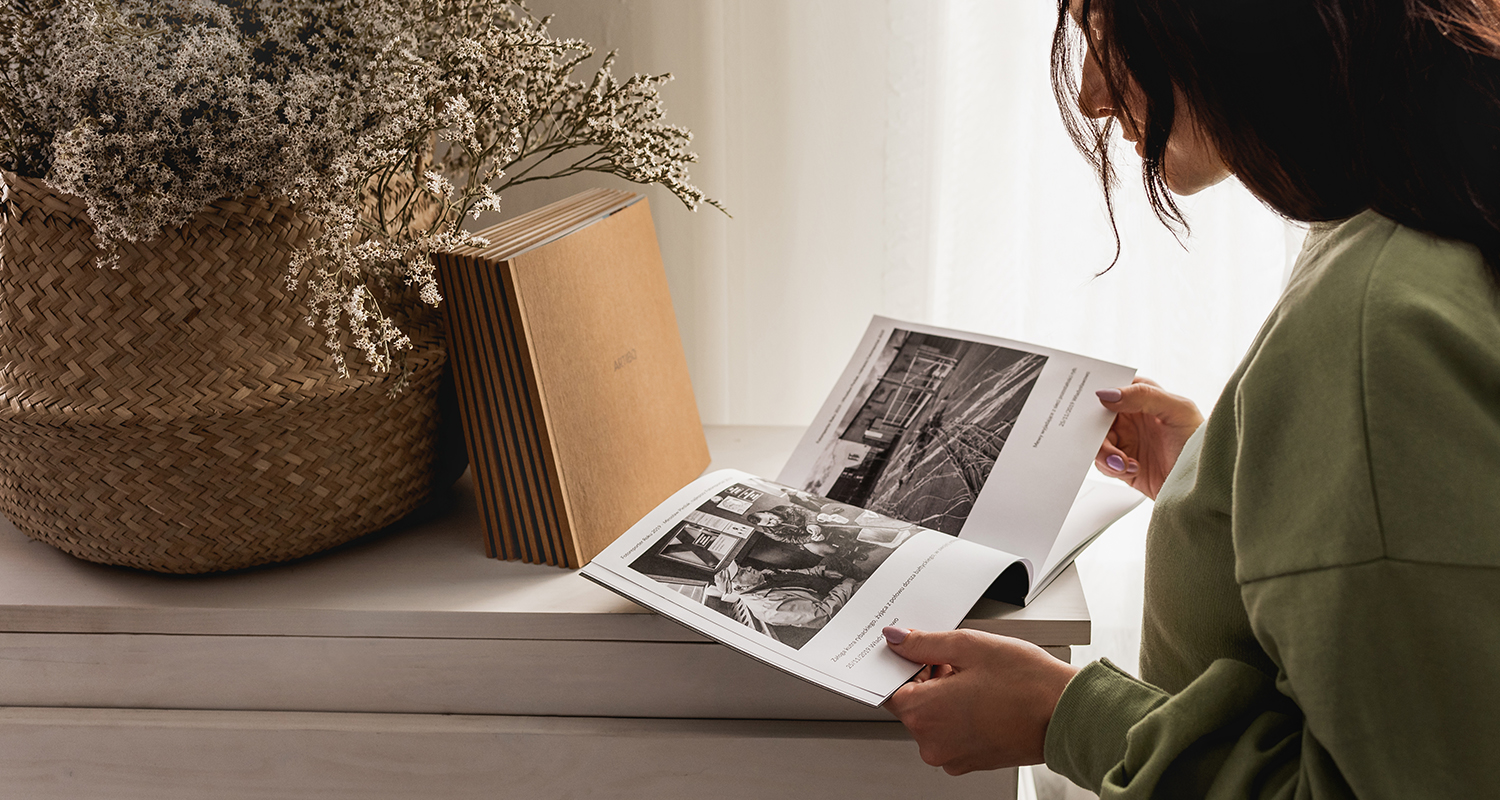
For some, crafting a photo book is a creative joy, while for others, it might be a mundane endeavour. At Artibo, it's all in a day's work. How can you make your own photo book? How do you go about designing one? In response, we've compiled a list of practical tips that will make the design process considerably easier, and elevate the impact of your photographic story.
1. Tailor Your Book to Match Your Style
Customize the presentation of your photos to reflect your unique style. Begin by asking yourself pivotal questions: What narrative will your photos convey? Why are you creating this book? Which book format aligns with your project? Do you prefer something basic or extraordinary? Establish a budget that suits your vision. Explore our diverse options:
- ArtiBook One: A best-selling softcover photo book, boasting minimalism, lightweight design, and versatility.
- ArtiBook Two: A classic hardcover photo book that exudes timeless elegance.
- ArtiBook Three: Elevate your presentation with a stylish photo album featuring rigid cards and a lay-flat design.
- ArtiBook Four: Indulge in the pinnacle of quality with a high-end photo book, radiating beauty and elegance, complete with a lay-flat layout.
2. Choosing Between Portrait, Landscape, or Square Size
Consider the orientation of your photos: be mindful of the balance between landscape and portrait shots. If you have more horizontal photos, opting for a horizontal book format is recommended. Conversely, if vertical images take center stage, such as in portraits, the vertical book format (with one photo per page) could be the ideal choice. Square books, known for their versatility, are a favoured option, especially for those with an equal mix of portrait and landscape photographs.
3. The Art of Storytelling
Your photos have the power to narrate a story. Whether capturing or curating them, it's essential to consider the context. Look beyond individuals, focusing on the backdrop, details, and distinctive features of the landscape. This approach enriches the impact of your storytelling. Remember, your photo book should emulate a narrative structure, featuring a beginning, middle, and end. To enhance the flow, infuse your book with a consistent theme. This cohesion ensures that your book unfolds seamlessly, creating a captivating journey for your readers.
4. Photo Selection - Easier Than You Think
You'll enjoy the book making process so much more if your photos are all ready. If you store them on the disk, organising them into folders is a great place to start. If you store photos on your phone, mark your favourites - it will make the selection easier for you.
The selection of photos is your milestone in the process of creating a book - be critical and choose the best photos. Sometimes you have to give up a great picture because it doesn't fit in with your story, or your photo book style. When choosing photos, pay attention to how they interact with each other.
5. Designing: Let Your Creativity Shine!
With Artibo’s Online Designer, you gain access to pre-designed layouts that can be easily customized to suit your vision. This intuitive tool empowers you to experiment with different arrangements. Whether you have a specific theme in mind or wish to curate a diverse array of memories, the Online Designer simplifies the process, allowing you to transform your ideas into a visually captivating reality.
It's essential to take into account the physical dimensions of the book itself. For example, if you're working with a 20x30cm book size, a smart strategy is to limit the number of photos on each page to around four. This deliberate restraint serves a dual purpose: it enhances the overall readability of your book and ensures that each photo has the space it needs to shine.
Feel free to put your best foot forward by dedicating entire pages or spreads to showcase your most stunning shots. This strategic decision allows your standout images to truly shine, commanding the attention they deserve. By granting these special photos their own dedicated space, you create a visual impact that draws readers in and holds their gaze.
6. Text is always welcome
Feel free to incorporate text into your design – it's entirely up to you and can be placed anywhere within your photo book. Consider adding extended descriptions that provide context to your narrative or brief captions beneath individual photos. However, bear in mind that the text size you view on your screen might appear larger than it actually is when printed. To strike the right balance, ensure that your chosen font size doesn't overpower your images. Generally, a font size of 9-11 points is optimal for legibility, catering to the reading comfort of most individuals.
7. Papers with benefits
Artibo takes pride in offering an exceptional range of acid-free papers with archival properties, ensuring that your photo book's pages won't yellow over the years. This signifies that the quality you experience today while flipping through your book will remain unchanged for your grandson or great-grandson when they cherish it in the future. Which paper suits you and your project? Choose from:
Glossy: Perfect if you're a fan of Vibrant Colors / Sharp Image Reproduction / Rich Contrast / Smooth Surface
Semi-matte (such as silk, lustre, satin): Ideal if you prefer Delicate Texture / Balanced Contrast / Reduced Glare / Versatile Appeal
Matte: Opt for this if you're looking for; Artistic Character / Enhanced Text Readability / Consistent Viewing Experience (no glare)
8. The power of the Title Page
The initial page of your photo book holds remarkable potential for making a captivating impression.
For those crafting an ambitious publication, consider incorporating a classic title page. Include a subtitle, family name, publication date, and place. If you're curating a travel-focused photo book, infuse it with dates, locations, and enriching details. You can even feature a map displaying your journey's path. For a family event album, ensure names, dates, locations, and role acknowledgements are included. Investing effort into designing this page yields lasting rewards.
Memories often fade, but the essence of a journey or celebration, eloquently summarized, appreciates in value over the years.
9. Elevating Your Book's Uniqueness
Elevate your photo book beyond mere images, infusing it with an extra layer of allure. This is where the true beauty lies. If you're prepared to invest some additional time to enrich your creation, here's a captivating technique: scan items linked to the narrative - think entrance tickets, boarding passes, and other mementoes. By incorporating these artefacts, your book gains an unexpected and complementary dimension. Consider leaving a blank page within the book's pages as a canvas for your own creativity. Jot down personal thoughts, add a handwritten note, or even imprint the footprint of a child. This subtle addition enhances the narrative's intrigue, inviting readers to delve deeper into the story's enchantment.
10. Stress-Free Short Stories
Think making a whole photo book is too much? We often have loads of pictures, but they can be a mess to sort. Here's a cool idea: make short story books. Instead of one big book, split your pics into two or three smaller books. Imagine how nice they'll look on your shelf if they're the same size and style – even with matching numbers on the cover. Making these in Artibo's Online Designer is easy and fun, and having your very own special book is priceless. Your pics deserve to shine in a special way. So, give designing a go and enjoy the ride!







